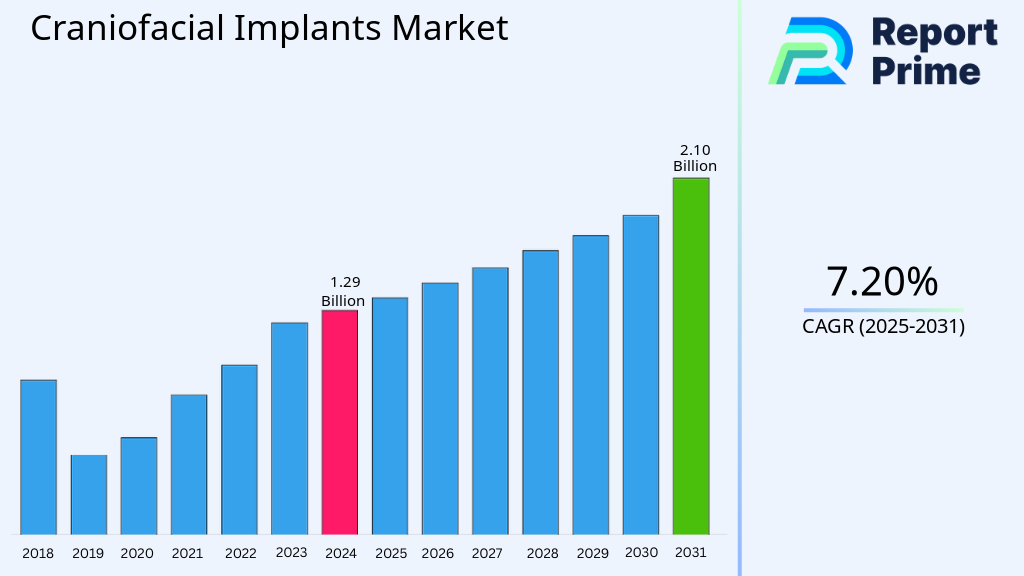
Introduction
The craniofacial implants market is experiencing strong growth, driven by rising incidences of craniofacial trauma and congenital deformities, increasing adoption of advanced 3D-printed and patient-specific implants, and growing demand for minimally invasive reconstructive procedures. With technological innovation enhancing implant precision and biocompatibility, understanding market dynamics is critical for stakeholders to align strategies with patient needs, regulatory developments, and emerging opportunities in healthcare infrastructure expansion.
Market Segmentation
By Type
Titanium Implants – Dominating the market due to their superior strength, biocompatibility, and proven success in craniofacial reconstruction.
Polymeric/Bioresorbable Implants – Expected to grow at a CAGR of 9–11%, supported by the increasing preference for materials that eliminate the need for secondary surgeries.
Ceramic & Hybrid Implants – Emerging in specialized sectors such as pediatric craniofacial surgeries and cosmetic applications, where aesthetic outcomes and tissue integration are prioritized.
By Application
Trauma Reconstruction – Largest segment, driven by high prevalence of road accidents, sports injuries, and violence-related trauma.
Congenital Disorder Treatment – Gaining adoption in pediatric neurosurgery and plastic surgery, supported by rising awareness and access to corrective procedures.
Cosmetic & Aesthetic Applications – Experiencing steady growth due to increasing demand for facial reconstruction and elective cosmetic enhancements.
Regional Insights
North America – Leads the market, fueled by high healthcare spending, strong presence of specialized craniofacial surgeons, and availability of advanced implant technologies.
Europe – Growth supported by strict regulatory frameworks ensuring implant safety and government-funded craniofacial reconstructive programs.
Asia-Pacific – Fastest-growing region, led by China and India, where expanding healthcare infrastructure and rising surgical tourism drive demand.
Latin America – Moderate growth, with Brazil and Mexico emerging as regional hubs for cosmetic and reconstructive surgeries.
Middle East & Africa (MEA) – Growth driven by increasing government investment in healthcare modernization, though limited access in rural areas presents challenges.
Competitive Landscape
Key players in the craniofacial implants market include:
Stryker Corporation – Focused on R&D and patient-specific 3D printing solutions.
Zimmer Biomet – Leveraging strategic partnerships and product portfolio expansion in craniofacial reconstruction.
Johnson & Johnson (DePuy Synthes) – Strengthening market presence through mergers, acquisitions, and global expansion strategies.
Medtronic – Investing in next-gen biomaterials to enhance biocompatibility.
KLS Martin Group – Recognized for innovative surgical solutions and customized implants.
Future Outlook
The global craniofacial implants market is projected to reach USD 4.5–5.0 billion by 2032, growing at a CAGR of 7–8%. Growth will be driven by:
Rising demand for personalized implants enabled by 3D printing and AI-based surgical planning.
Expanding access to reconstructive surgery in emerging economies.
Increasing insurance coverage for trauma and congenital surgeries.
Challenges include high surgical costs, risk of post-surgical complications, and stringent regulatory approvals.
Strategic Recommendations
Invest in R&D – Focus on patient-specific, bioresorbable, and hybrid materials to meet evolving clinical demands.
Expand in Asia-Pacific – Leverage surgical tourism and growing healthcare infrastructure in India and China.
Strengthen Partnerships – Collaborate with hospitals and plastic surgery centers to accelerate adoption.
Leverage Digital Health – Integrate AI-based pre-surgical planning and imaging to enhance implant precision and outcomes.
Visit website - https://www.reportprime.com
More Related Reports -




















Write a comment ...